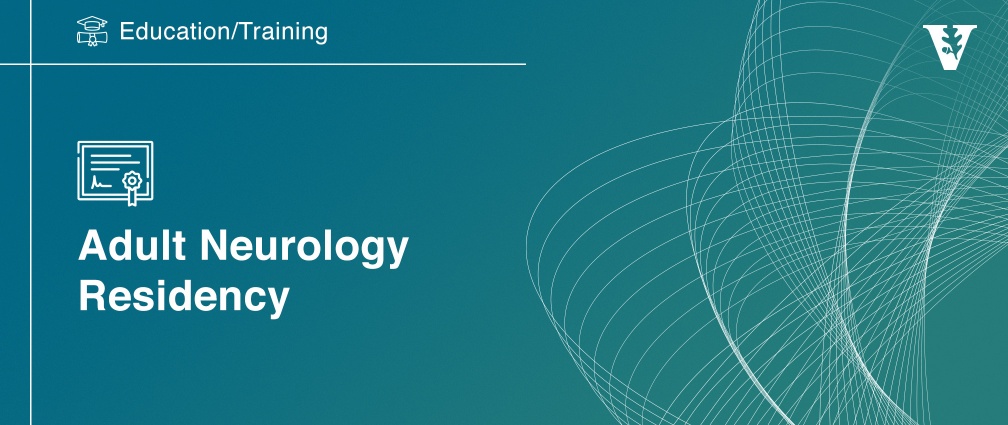PGY-1
PGY-1 is managed and primarily housed in the Department of Internal Medicine. Residents’ schedules combine inpatient ward, inpatient intensive care, emergency medicine, and outpatient clinic experiences. Intern's connections to their future careers in Neurology are also fostered with a rotation in the neuroscience ICU and regularly scheduled time in the VA medical center’s neurology clinic. PGY-1 residents are encouraged to attend the Neurology Department’s lecture series as they are able.
First Year of Neurology (PGY-2)
Focus on the acutely ill neurological patient.
The aim of the first year is to provide comprehensive clinical experience in adult neurology through both outpatient and inpatient diagnosis and management. Each resident completes 13 4-week blocks of clinical service, balanced between about half inpatient and outpatient rotations. The inpatient rotations include the Stroke/General/Consult services, and outpatient rotations include The Vanderbilt Clinic, VA Clinics, EEG, and Elective. Call this year is divided between blocks of rotating single night calls and blocks of night float.
Second Year of Neurology (PGY-3)
Exploring Subspecialties.
The second year presents residents with an exceptional opportunity to lay the foundation for their future career path by exploring subspecialties through time spent in elective blocks. Residents have the option to identify a mentor and arrange for protected time that might be spent, for example, becoming immersed in the literature to define a course of study, to develop a clinical or basic neuroscience research project, or to write an application for a research fellowship.
Electives comprise over a quarter of the year, and clinical rotations include Electromyography (EMG), supervising resident rotations on the Stroke and VA Inpatient services, The Vanderbilt Clinic, EEG, Child Neurology, and night float.
Third Year of Neurology (PGY-4)
Junior attending year.
In the third year, residents must demonstrate to their faculty that they are prepared to work independently. Third year residents assume an ascending level of responsibility for patient care as they take on senior ward responsibility for training junior residents in the program. The clinical and management challenges encountered will serve to reinforce the knowledge gained in the previous years and solidify the skills necessary for a successful clinical neurology practice. Two third year residents are selected as Chief Residents for the year and are responsible for developing the resident rotation and call/night float schedules, coordinating educational schedules, and serving in a leadership position in the residency program.
Rotations in the senior year include 5 blocks of elective time, with clinical rotations as the junior attending on the General Neurology Service, Stroke Service, Consult Service, The Vanderbilt Clinic, Neuropathology, Child Neurology, and night float.
Clinical Settings:
- Inpatient treatment at Vanderbilt University Hospital
- Subspecialty outpatient clinics, where residents work closely with the subspecialty faculty
- Continuity clinic, managed by residents, composed of general neurology outpatients
- Residents also have volunteer opportunities at the monthly Shade Tree Clinic
Goals
The goal of the program outlined above is simple: to train outstanding clinical neurologists. We strive to make your career goals our goals as well, as our faculty is dedicated to helping residents discover their niche in the field. The residency program is designed to develop the future leaders in Neurology—whether they be in clinical practice, physician scientists, or clinician educators. Our faculty also instills lifelong learning in our residents through access to lectures, journal clubs, conferences, and countless other opportunities for growth beyond residency training (see more in Didactics). Finally, our residents demonstrate excellence in educational outcomes and are fully prepared for board examinations upon graduation.
Graduates are also proficient in the following procedures:
- Lumbar puncture
- EEG
- EMG/NCS
- Botulinum toxin injections
- Occipital nerve blocks
There are opportunities for:
- DBS programming
- Epilepsy surgery consideration
- Single fiber EMG
